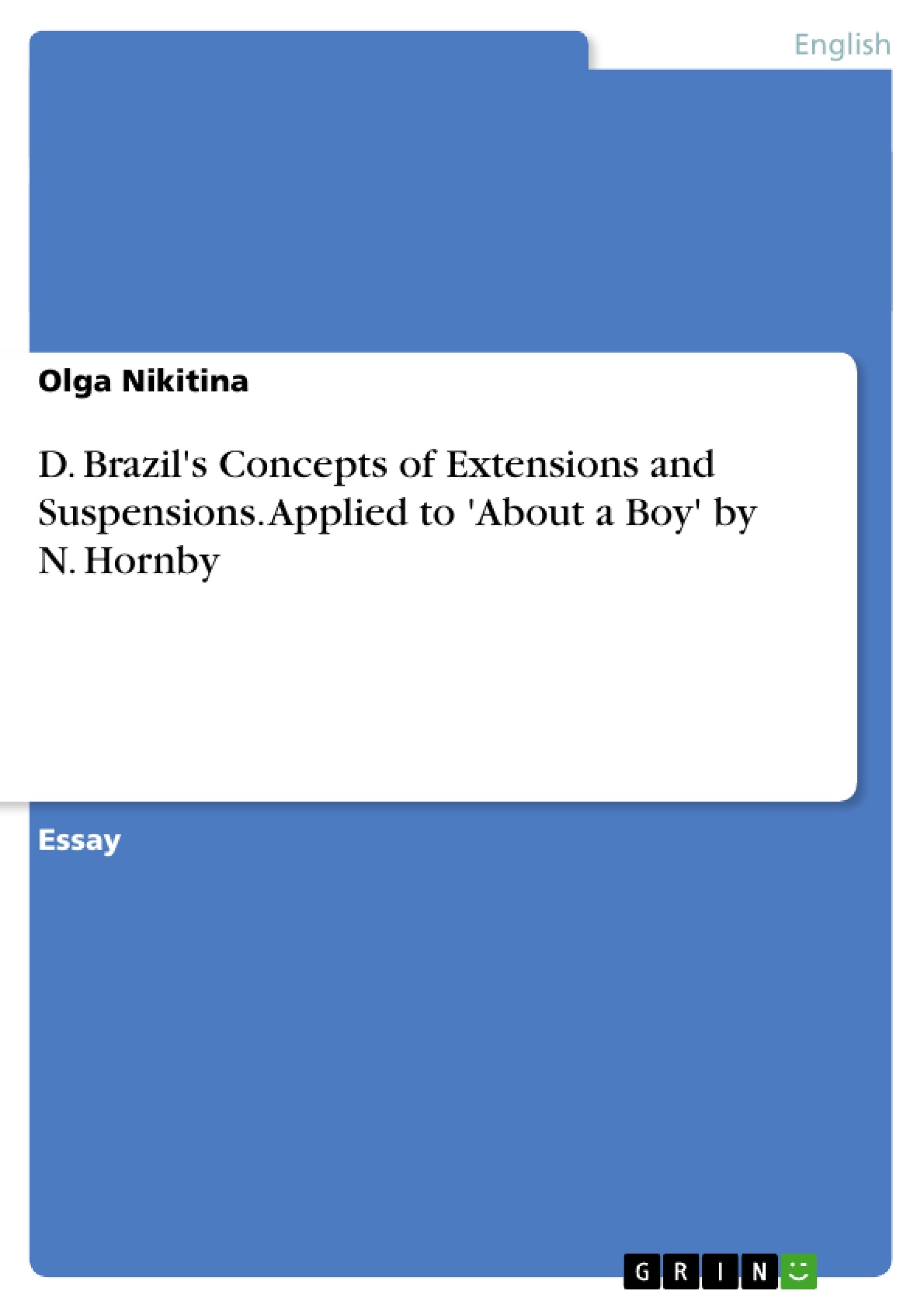In his theory of Grammar of Speech David Brazil introduces two concepts, which I am going to consider in this paper: Extensions and Suspensions. Let me give a short account of the meaning of the terms in question before I go on to apply them to the text.
Extensions according to Brazil’s theory are non-finite forms of the verb such as the Infinitive, the Gerund and the Participle (Present or Past) used by speakers in order to complete their communication and achieve the Target State, i.e. to communicate to the listener everything they (the speakers) have to say, after they have exhausted the possibilities provided by the simple chain rules. In short, extensions are found at the end of the sentence after simple chains. Here it is important to note, that the non-finite forms of the verb possess an ability, which distinguishes them from other syntactic elements, being verbs they are able to initiate a sub chain, i.e. to be modified by an adverb or a phrase, or to take an object.
Suspensions on the contrary occur at the beginning of the sentence in the seemingly “wrong” place according to the sequencing rules. They intrude into the syntactic chain suspending the achievement of the Target State and as a result often acquire some kind of `marked´ or `parenthetical´ status. Suspensions can be expressed not only by non-finite forms of the verb but also by adverbs, adverbial and prepositional phrases.
Inhaltsverzeichnis (Table of Contents)
- Extensions
- Sentence Structure with Extensions
- Examples of Extensions
- Suspensions
- Sentence Structure with Suspensions
- Examples of Suspensions
Zielsetzung und Themenschwerpunkte (Objectives and Key Themes)
This paper examines David Brazil's theory of Grammar of Speech, focusing on the concepts of Extensions and Suspensions. The paper utilizes examples from Nick Hornby's novel "About a Boy" to illustrate these concepts and their application in analyzing sentence structure.
- Extensions as non-finite verb forms used to complete communication.
- Suspensions as elements that disrupt the syntactic chain and often have a marked status.
- The role of Extensions and Suspensions in creating various sentence structures.
- The analysis of specific examples from "About a Boy" to demonstrate the application of these concepts.
- The potential of Brazil's theory for describing and analyzing different types of sentence constructions.
Zusammenfassung der Kapitel (Chapter Summaries)
The paper begins by outlining the concepts of Extensions and Suspensions according to Brazil's theory. It then moves on to illustrate these concepts with examples from "About a Boy". The first part focuses on Extensions, exploring different types of sentence structures and how non-finite verbal elements contribute to completing communication. The second part focuses on Suspensions, demonstrating how they function as interrupting elements in the syntactic chain, often with a marked or parenthetical status.
Schlüsselwörter (Keywords)
This paper focuses on the core concepts of Extensions and Suspensions in David Brazil's Grammar of Speech theory. It utilizes the novel "About a Boy" by Nick Hornby to illustrate these concepts and their application in analyzing sentence structure. Key terms and themes include: non-finite verb forms, syntactic chains, Target State, Intermediate State, marked status, parenthetical, simple chains, complex chains, and examples of sentence structures containing Extensions and Suspensions.
- Quote paper
- Olga Nikitina (Author), 2005, D. Brazil's Concepts of Extensions and Suspensions. Applied to 'About a Boy' by N. Hornby, Munich, GRIN Verlag, https://www.grin.com/document/69810



